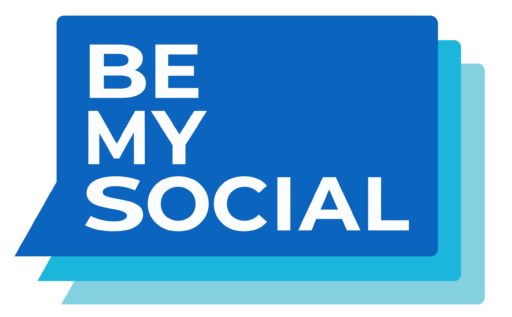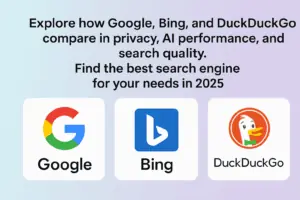Having a good, on-brand social media marketing strategy is an incredibly important asset for any business to have in this day and age.
Last year, individuals spent an average of two hours and twenty-three minutes per day browsing social networks, so ensuring that you’re in on the action is a key way to be seen.
There are many different types of social media platforms, each with their own specific use. Do you want to get the most out of social media? Read our tips for a successful marketing campaign below!
Create a plan
Before you start creating your social media posts, you must consider the goals of your business. You need your social media to clearly display these goals through your brand and type of content so that an audience can understand what you’re telling them.
Consider these questions when attempting to establish your social media content marketing goals:
- What do you want to achieve with social media marketing?
- Who is your target audience?
- Where would you usually find this target audience? How do they consume social media?
- What messages do you want to get across with social media marketing?
Choose the correct platforms
The number of social media platforms available is vast and growing every single day. Whether you want to share written content, podcasts, or photos and videos, there’s a site that’s perfect for you. Choosing the right platform can be an essential factor in your success.
You should always keep your customers and business in mind when choosing a social media platform. It’s important that you create accounts on all of the platforms that your target audience regularly uses, so that you can interact with them directly and connect with them instantly. We recommend conducting some research, such as a survey, to fully determine the most popular platforms within your audience and using them to your advantage.
You should also consider which sites best fit your products. For example, if you wish to create both written and visual content, and you want to speak directly to your audience, Facebook and Twitter will be your best bet.
Create a posting calendar
If you’re rushing around to create social media posts last minute, or if your accounts aren’t organised and punctual, it can decrease quality and traffic to your site. Creating social media content calendars can help you stay on top of your socials, and can ensure that you’re regularly sharing content that your audience can interact and engage with.
We can help you with your social media organization and output. Our dedicated team will work to ensure that your content is suitable for its platform, and that it goes hand in hand with your brand and increases traffic to your site.
Track your competitors
It’s always handy to keep an eye on what content your competitors are putting out there. They can provide you with necessary data, such as keyword research and post frequency. If your competitors are using a particular platform that seems to be working in their favour, try and implement it into your own social media marketing strategy, but do it a whole lot better!
Interact and engage (address problems)
The main aim of social media is for it to be social. This may seem pretty obvious. As an individual, you use social media to keep in contact with your family and friends by messaging them directly or commenting on their content.
Businesses should use social media for interaction too. In order to take advantage of the “social” element you need to interact with your customers as much as possible.
Post content that you know your audience will appreciate. Ask questions in your post and create polls. Reply to their comments and messages. Researching your audience thoroughly can help you decide on the appropriate content for them.
Hopefully, the feedback you receive from your audience on social media will be positive. Unfortunately, you may sometimes encounter someone who has something negative to say about your company or the content you are producing.
To identify issues before they escalate, make sure that you are constantly monitoring your channels and deal with the issue in a professional manner. If you encounter a problem, reach out to the individual directly and apologise if necessary. You can do this by replying to them publicly, or by private messaging them. This way, your audience can see that you deal with issues promptly and professionally, and messaging privately means they don’t have to see the exact specifics of the issues.
Add value to your audience experience
One of the most important things you can do with your social media is to provide your audience with value. You can achieve this by creating something they will find useful. It could be something informative that lets them know something they weren’t aware of, provides them with entertainment, makes them laugh, or anything else which could be considered beneficial.
This particular aspect of social media is what attracts your target audience to your business and, in turn, helps garner interest in your socials by helping content spread. Being able to master these skills will be incredibly helpful in successfully establishing a successful marketing campaign.
With nearly 3 billion active users, it’s incredibly important to attract new customers and retain old ones through your social media channels. You can grow your number of customers by connecting with these potential customers, and this can be achieved with a great social media campaign.
Share videos
Visual content is a popular choice in social media. In May 2020, 54% of social media consumers said that they want to see more video content from a brand or business they support. Videos are incredibly effective in grabbing people’s attention, and they do well at conveying your brand and passion to an audience.
Audiences are more likely to stop and view a video as it stands out on their feed, especially if they’re snappy visually appealing. It also provides you with the ability to say exactly what you want without writing it out and taking up too much room. Creating interesting videos that tell a story proves to be the most effective way of getting a positive reaction.
Don’t over promote
A regular mistake many businesses make is using their social media platforms like an advertisement service. Promoting yourself too much in posts can cause audiences to turn off. You need to ensure that the content you are creating is engaging, informative, and what your target audience wants to see.
It’s okay to promote yourself every now and again, in fact, it’s encouraged. To ensure that you aren’t flooding your audience’s feed with promotional content, you could follow the “one-in-seven” rule, which implies that for every promotional post, you should follow it up with six content-based ones.
For content ideas, you could share an article, pass comment on relevant current events, or engage with your audience by conducting polls and asking questions. You don’t have to completely omit your brand from these posts, just don’t promote too heavily
In Conclusion
We hope we’ve provided you with enough tips to help get your social media marketing strategy up and running. Need some help organising and running your accounts? We’re here to help!
Our dedicated team will create written and visual content and will post it directly to all of your socials, all the while adhering to your brand. Get in touch today and see how we can help you.










